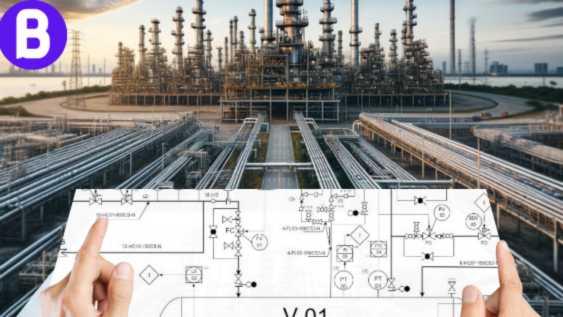In this course, we shall discover Piping and Instrumentation Diagrams (P&IDs) preparation common practices, how details of piping, equipment, and instruments are added. We shall then go through operational considerations such as isolation and drainage. Another section shall be through applying overpressure protection and safety considerations in addition to safety studies such as HAZOP & SIL reviews of the P&IDs.

What you shall learn in this Course
- Workflow of P&ID issuance and its role in a project
- Details shown on a P&ID for piping, fittings, instruments, scope definition, etc.
- Anatomy of the P&ID
- P&ID types such as legend, typical detail, process, utility or tie-in P&IDs
- P&ID guidelines to ensure easy plant operation, startup, and performance indication
- Isolation of equipment for maintenance
- Plant drainage system
- Maintenance and steam-out requirements and how they are reflected on a P&ID
- P&ID guidelines for process safety and overpressure protection
- Using P&IDs to analyze expected plant hazards and upset conditions
- Adding alarms to warn the operator to respond to upsets
- Difference between control systems (e.g., DCS) and shutdown systems (e.g., ESD)
- Prevent hazards by process/system shutdown using ESD
- Mitigate hazards using process safety valves
- How to set equipment design conditions to ensure inherently safe operation
- Control and shutdown valve fail-safe positions
- Example of HAZOP and SIL assessment of a P&ID
- Applying detailed review on a P&ID using a P&ID checklist
- Engaging and edited videos
- Quizzes to ensure the course is well digested
Need a full Process Engineering Course from Zero to Hero?